
Guide
Do you have these plants at home? Then don't let your pets touch them!
by Darina Schweizer

I want plants for my new, sunny balcony. But they’ve got to be low-maintenance, cat-friendly and able to withstand heat and cold. Does such a thing even exist? Yep. These robust beauties passed the test.
I’m lazy when it comes to plants. That’s why for years I’ve only had succulents indoors. If you forget to water them for a week, they’ll still be perfectly upright. What about plant diseases? No chance. They’re also safe for my cats and they fit in perfectly with the beach house style in my new flat.
I finally have a balcony. Obviously, if I’d wanted, I could have put succulents out here. Don’t mess with the system, you say? Not quite. It’s hard to find succulents that are non-toxic to pets and also hardy. I don’t have space to keep them inside over winter.
So I thought outside the pot and came across the following Mediterranean plants:
If I could only eat only one food for the rest of my life, it’d have to be olives. I love all the different types. And recently I’ve also come to love their «parents»: olive trees. In summer, an Olea europaea in a pot can withstand the heat just as well as short-term cold down to -10 degrees in winter. It’s also resistant to disease. No wonder given it’s the oldest specimen on Crete dating back over 3,000 years (site in German).
The only slight drawback is that when I repotted my olive tree after its journey by post, it lost almost all its leaves for a while – probably due to stress. It can also be quite sensitive to draughty locations and wet «feet». However, mine recovered quickly.
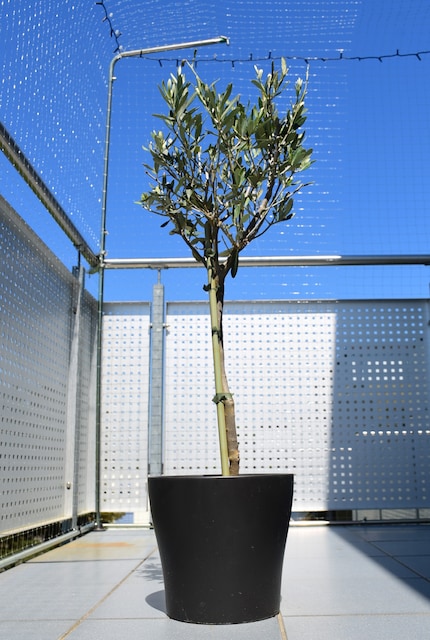
Yes, it’s possible for olives to grow in a few years, but it’s very unlikely. To do this, the tree would need to have optimal conditions for several years. In other words, plenty of sun, a balanced change of seasons, sufficient ripeness – and ideally a suitable second variety for cross-pollination. Only a few olive varieties are self-fertile. If you want to harvest fruit, varieties such as Frantoio , Ascolana, Leccino or Pendolino are the most suitable (sites in German).
As commercial olive trees rarely flower and produce little nectar, I was still looking for a bee-friendly plant, which is how I ended up with the Dasiphora fruticosa. Also known as Potentilla fruticosa, this plant grows white, pink, yellow, orange or red flowers, depending on the variety. In my case, the buds opened just a few days after I moved in. Enchanting!
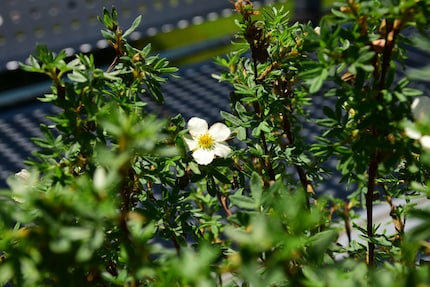
And best of all, the Dasiphora fruticosa is very robust. Not only does it survive repotting without any problems, it’s also meant to cope well with the cold. All it needs to do is shake off its white coat when it snows. It also defies the summer sun. Or rather, it thrives in heat. The brighter the location, the more flowers it’ll produce. My sunny balcony is testament to this.
Unlike the olive tree, the cinquefoil sheds its leaves in the autumn. But in spring, it puts on its green coat again and enchants us for a long time with its romantic flowers. Feey captures it well when it says: if you had to rate the Dasiphora fruticosa with one hand, you’d need to raise all five fingers. This is where it gets the nickname shrubby five-finger, as almost every branch has five little leaves.
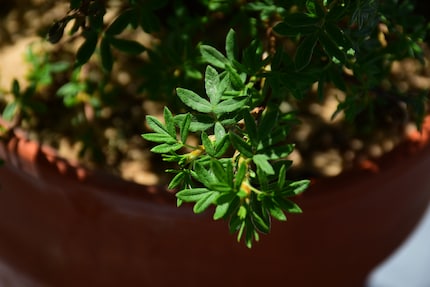
As a pantheist, the only «religious» thing in my home is of course a plant: the santolina (site in German). Visually speaking, the Santolina chamaecyparissus or cotton lavender is captivating with its feathery leaves, which hang from the branches like delicate caterpillars all year round. This plant is resistant to both heat and cold.
But why on earth is it sacred? Because it’s virtually spared from plagues such as pests? Maybe. However, the right answer can be found in its scented leaves. In times of great poverty, altar boys burned it in churches instead of incense. It was also used in popular medicine as a herb, such as for intestinal parasites. Today it can be used to prevent moths or be smoked.
But you don’t necessarily have to be spiritually minded. With its sun-shaped flowers, this cotton lavender will impassion even the most atheist of balconies. It also attracts the odd furry miniature angel. Erm, I mean bees, of course.
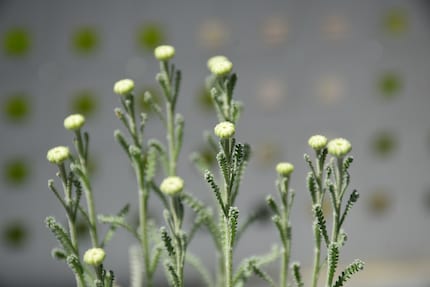
But there is one balcony plant that insects prefer even more, and that’s lavender. Just like the bees, you’ll also want to stick your head in the shrub. The scent has a proven (site in German) calming and mood-lifting effect. It immediately catapults me back to my holiday in Provence. And the plant needs just as little work as I do on a break. Bear in mind that Lavandula stoechas or butterfly lavender isn’t hardy; only true lavender (Lavandula angustifolia) is.
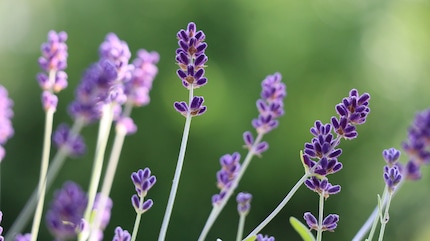
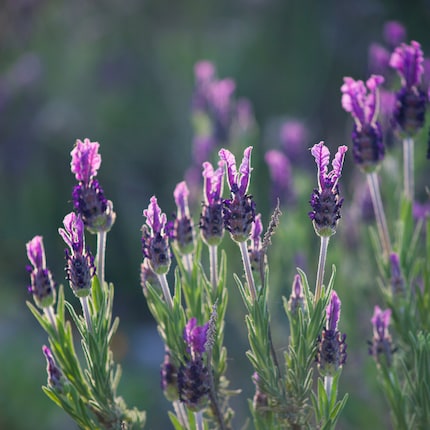
This is also edible. You can use individual young shoots, panicles and calyxes to [flavour] ((https://www.bettybossi.ch/de/magazin/artikel/lavendel-in-der-kuche-so-verwendest-du-ihn-zum-kochen-und-backen/?srsltid=AfmBOopItg1u8a6xqUa4YIhSm1QgAD9QScY-C_P1ftWLyaOJoFRsoTJE) ) (site in German) flans, fruit salad, jelly, glazes, jams, syrup and tea. Lavender also tastes delicious in pastries, cakes and tarts, and when preserved in oil, vinegar or butter. The French use it mainly in fish, meat, poultry, vegetables and soups. In other words, everything.
Staying on the food theme, these traditional herbs of Mediterranean origin can brave both heat and cold. Rosemary, thyme and sage are particularly low-maintenance and also non-toxic for pets. Ideally, you’ll want to buy organic quality (site in German) plants.
Recently, I’ve started sprinkling my homegrown thyme and rosemary over all my meals. The only disappointment is the sage. It starts to droop in the pot after just one or two warm days without water. So if I was choosing drought-resistant balcony plants again, I wouldn’t pick sage.
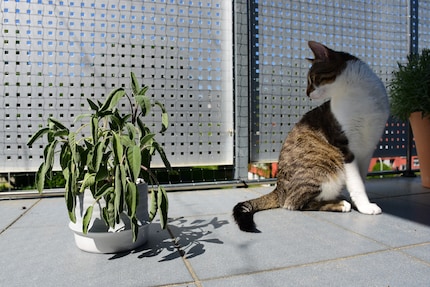
Which balcony plants could you not live without? Let us know in the comments!
I love anything with four legs or roots - especially my shelter cats Jasper and Joy and my collection of succulents. My favourite things to do are stalking around with police dogs and cat coiffeurs on reportages or letting sensitive stories flourish in garden brockis and Japanese gardens.
Practical solutions for everyday problems with technology, household hacks and much more.
Show all